Finding the best stereo system for you can be confusing, especially if you do not have even the most basic information regarding what to look for in a quality stereo system. The information below is intended to assist you in choosing the best one for your budget and personal use. Below are the top home stereo systems for 2023:
Contents
- 1. Logitech Z506 Surround Sound Speaker System
- 2. Edifier R1700BT Bluetooth Bookshelf Speakers
- 3. GPX HM3817DTBK Home Music System
- 4. Bose Wave SoundTouch Music System IV
- 5. Onkyo SKS-HT690 5.1-Channel Home Theater Speaker System
- 6. Monoprice 5.1 Channel Home Theater Satellite Speakers And Subwoofer
- 7. Rockville HTS56 1000w 5.1 Channel Theater System
- 8. KEiiD Compact CD/MP3 Player Hi-Fi Speaker
- 9. Goldwood Acoustic Audio 2.1 Bluetooth Speaker System
- 10. Bluetooth-Compatible Classic Vintage Turntable
- Home Stereo System Selection Tips
- Types of Home Stereos
- Top Home Stereo Brands
- Average Home Stereo Pricing
- Question and answers (Q&A)
1. Logitech Z506 Surround Sound Speaker System
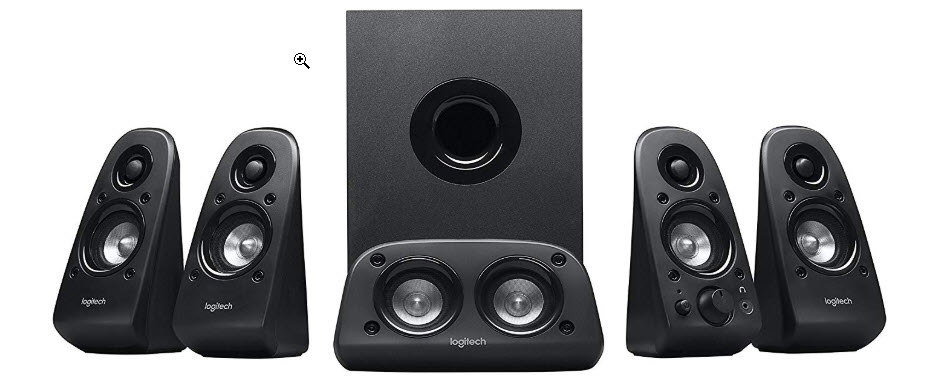
The affordable system includes a ported down-firing subwoofer and 6 black speakers to support clean, booming bass. The system is lacking Bluetooth connectivity but delivers 75 watts of balanced power, which is adequate to fill the space with sound. The speaker bass has a control dial that enables easy adjustment of the bass levels. The system can be hooked up to your computer and it also has a RCA or 3.5 mm audio out. This allows easy connection to devices like iPods and video game consoles.
Pros
• Very affordable
• Setup is simple
• Very quiet headphone output
Cons
• Lacks Bluetooth connectivity
• No speaker grill on the main speaker of the sub unit
2. Edifier R1700BT Bluetooth Bookshelf Speakers
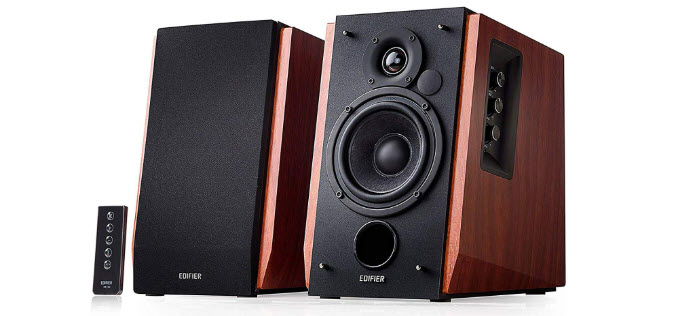
These bookshelf speakers have full Bluetooth capabilities and provide extremely clear stereo sound performance. The manufacturer has combined dynamic audio with a classic wood finish which provides the speakers with finesse. The speakers come with a 4-inch bass driver and a 19mm dome tweeter that provide good natural tones, plenty of depth and crisp highs to satisfy both experienced musicians and casual listeners.
Its sound quality is boosted by its connection diversity that can be used since these speakers have Bluetooth connectivity and two AUX inputs. The Edifier R1700BTs also has an exceptional design, a classic wood finish, proper sizing and a remote control. The system can easily blend into just about any space.
Additionally, its Bluetooth connectivity enables it to be connected to devices like a tablet, smartphone, gaming console, computer, receiver or television. Overall, this system provides well-defined and crisp stereo sound.
Pros
• Sleek design
• Excellent soundstage and crystal clear sound performance
• It supports a range of music sources
• Full wireless Bluetooth functionality from the speakers
• Music can be streamed directly from your mobile device
Cons
• Lacks bass response
• Require dedicated subwoofer for added depth
3. GPX HM3817DTBK Home Music System
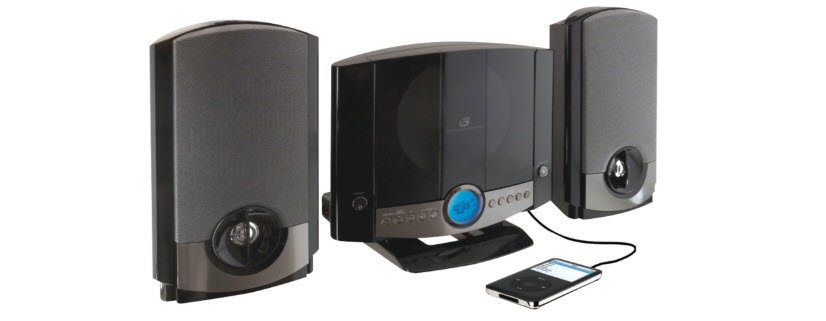
The GPX system provides an incredible, seamless sound. Its features include 4 preset electronic volume controls, a fully-functioning remote control, an LCD display with timer and clock and a digital tune AM/FM stereo radio. If you cannot decide what you would like to listen to, there is a vertical load CD/CDR/CDRW play that can be programmed in advance and pressing a single button will give you access.
The system enables you to increase the volume for the next gathering by delivering a high-quality sound. Your whole party will be covered with full-range speakers and the remote control allows you to rewind or skip ahead whenever needed. Also included are an auxiliary input jack, stereo line-in jack and a stereo-to-stereo plug line-in cord. The removable stand allows you to place the system anywhere. It can also be mounted on a wall.
Pros
• It has a sleek design
• Amazing and adjustable sound quality
• Fits in very small spaces
Con
• Power button has to be pressed for a while before it comes on
4. Bose Wave SoundTouch Music System IV
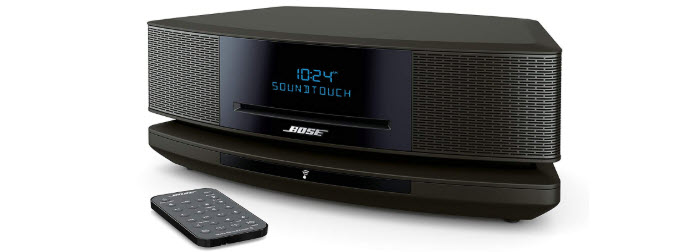
These world-class speakers bring cutting-edge wireless connectivity to their users. The system was designed to make it easier than ever to stream your favorite music, listen to the radio and play CDs.
It weighs 8.8 pounds and measures 4.3 x 14.5 x 8.8 inches. There are actually two pieces that make up the body of the stereo; a 4.1-inch upper section and a 1.6-inch tall pedestal, which gives a combined height of 5.3 inches tall. It is 8.6 inches deep and at its widest point it is 14.5 inches. It is important to be aware that the depth can provide an additional inch but if you do not have a problem with bending the cable against wall and two more inches if you are not.
Pros
• Incredible voice recognition
• Remarkable audio quality
Cons
• Set up process is difficult
• Poor case design
5. Onkyo SKS-HT690 5.1-Channel Home Theater Speaker System
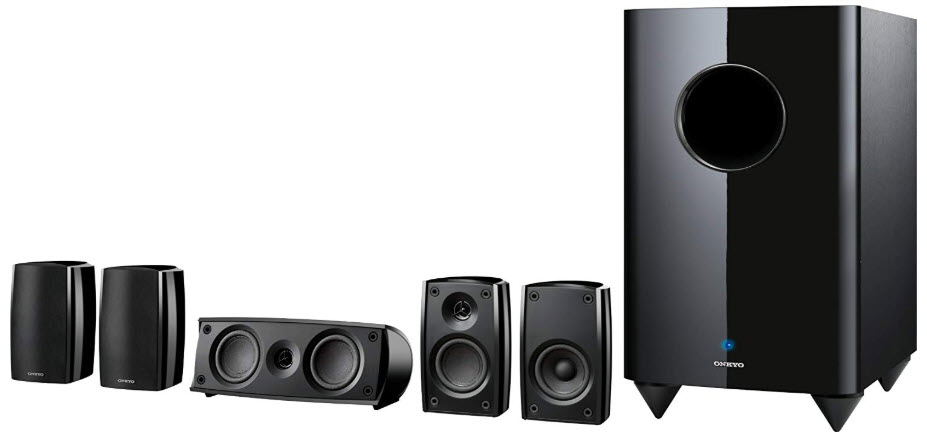
This system is cleverly designed with dedicated surround speakers. This is unlike the majority of packages that have compact satellite speakers and use the same speaker selection and enclosure for the main right, left and surround speakers.
In this package, the tweeter has been removed from the surround speakers; this has resulted in more focused dialogue reproduction and a balanced sound stage. Since the enclosure is the same, it is important to check the labels at the back during the setup process to make sure the surround speakers are placed in the right location.
The 1-inch balanced dome tweeters and 3-inch midrange drivers in the center channel and satellite speakers are enclosed in all-gloss and durable cabinets. The speakers are great looking; however, they do a poor job of hiding dust and fingerprints.
The cabinets are durable and heavy in comparison to other packages and are designed to prevent reflection from parallel surfaces. However, on the back panel are some spring-loaded speaker wire inputs that seem to be quite flimsy.
Pros
• Clear and accurate dialogue produced by the center channel
• The sound stage is balance
Con
• Bass response is lacking
6. Monoprice 5.1 Channel Home Theater Satellite Speakers And Subwoofer
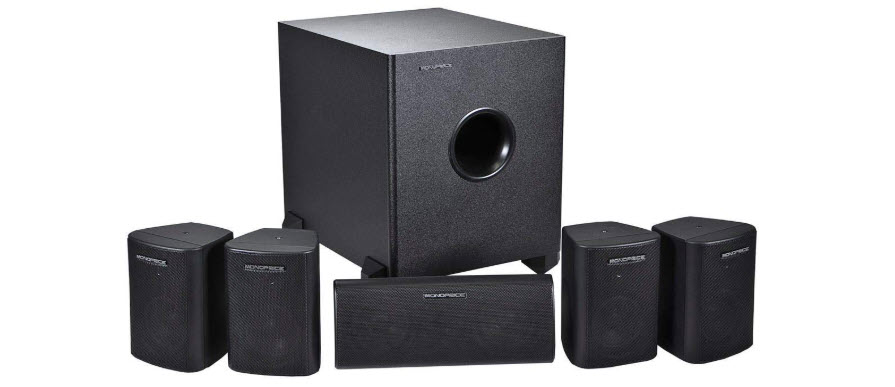
The Monoprice 5.1-channel speaker system allows you to surround yourself and be totally immersed in high-fidelity. All of the speakers are designed in a striking black finish and there are useful spring-loaded signal connectors. The speakers in the center use two 3-inch shielded mid-range cones, whereas the satellites use a ½-inch dome tweeter and a 3-inch cone.
This majority of the box is taken over by the subwoofer. There are also four identical satellite speakers and a center channel speaker. In addition to this, you will find an RCA cable to connect the subwoofer mounting hardware to set up the satellite speakers.
All the speakers have what can be described as a look synonymous with the brand; they are quite sparse in design features and black. They definitely do not look cheap or ugly; however, it is quite clear that in order to keep the price down, no extra funds were put into making them super attractive.
Its all-black look makes it extremely easy for the system to fit in with virtually any room. There are C brackets that come with the satellite speakers that allow for them to be strategically aimed at the listening positions. Though made from plastic, the hardware feels quite sturdy. What is provided for the price is remarkable but regardless of the cost, this set of speakers would still be nice.
Pros
• Remarkable value for the money
• Mounting hardware included
• Exceptional sound, considering the price and size
Cons
• There are issues with the auto-on switch
• Speakers will not accept banana plugs
7. Rockville HTS56 1000w 5.1 Channel Theater System

The Rockville system has the capacity to produce 1000 watts peak power. It also has a 500 watts program and 250-watt continuous RMS. This is basically a complete home theater system that features 2 full-range 3-inch front speakers, a center speaker, two full-range 3-inch back speakers and an 8-inch subwoofer.
Its 8-inch subwoofer delivers rich, clear and deep bass with no discernible distortion or rattling even at elevated volumes. Additionally, the subwoofer and all 5 speakers will always play together. Its built-in media player/receiver has a digital readout, FM radio, a 5-band EQ, SD/USB input and Bluetooth. On the front, there are 2 ¼-inch MIC inputs with echo control that are suitable for Karaoke. Additionally, 5 RCA audio outputs are on the back.
Strong MDF material is used to make the speaker cabinets and each speaker has its individual volume control to adjust them independently. RCA connectors and long length cables are included. This enables quick and easy mounting of the speakers. With this system, you will get surround sound and be able to listen to music via any source.
Pros
• Outstanding sound quality
• Exceptional Bluetooth connection
• Easy to install
Con
• Lacks optical audio connection
8. KEiiD Compact CD/MP3 Player Hi-Fi Speaker
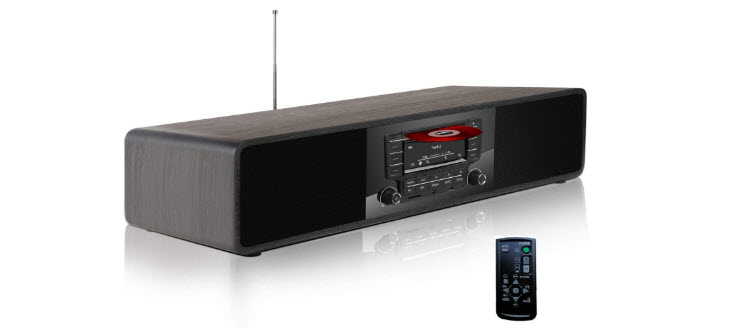
This system is equipped with the original CD radio unit typically used in motor vehicles to amplify its stability and reliability. Its important features include its 4 speakers that offer Hi-Fi sound quality, HD 5 inch display, Slot-in type CD reading, remote and humanized operations and its elegant design.
Additionally, this multi-functional system includes a USB/SD MP3 player, Bluetooth speaker and a HD FM radio digital tuner. Furthermore, an audio cord can be used to connect to the television and used in your home theatre as a soundbar.
Pros
• Built-in microphone and Bluetooth
• Wirelessly play music via Bluetooth
• It supports hands-free calls
• Talk directly with Siri
Cons
• It is a bit heavy
• Bass could be stronger
9. Goldwood Acoustic Audio 2.1 Bluetooth Speaker System
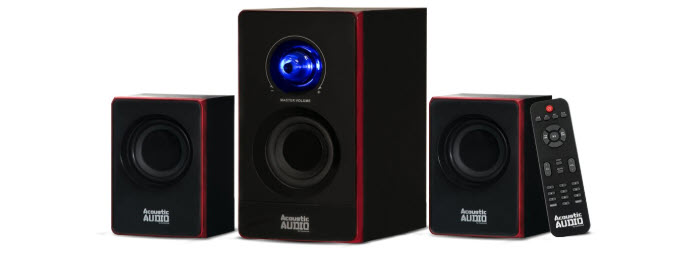
At a mere 8.5-inch high, this high-definition speaker system throws a serious blow. It delivers 200 Watts of total system power and offers immersive audio that can be heard and felt. It delivers lush mid ranges and clean high notes while the extreme, front-firing bass subwoofer produces profound, thumping bass that is free of distortion.
The easy-access volume control knob on the front panel achieves immediate control. You will also benefit from the rear bass control knob, the top panel inputs and controls and a fully-functioning remote control.
The built-in Bluetooth receiver enables you to instantly and wirelessly connect the system to your tablet, computer or smart phone. If a wired connection is your preference, the built-in audio amplifier in this system has RCA audio outputs that connect your gaming console, television, DVD player, laptop or PC, tablet or phone. For your convenience, a 3.5mm to RCA wire is also included.
Its smooth, black finish is accentuated with red. Additionally, its size makes it easy to be incorporated into any room. Wherever you choose to place it, the space will be transformed with bold, high-quality sound.
Pros
• Stylish design
• Connects seamlessly
• Bold and high-quality sound
Cons
• Treble could be sharper
• Bass is just ordinary
10. Bluetooth-Compatible Classic Vintage Turntable

This vintage turntable system combines the classic record playing style of yesterday with the newest technology of today. The external full-range stereo speakers and the built-in Bluetooth enable you to stream music wirelessly from devices like Androids, iPhones, Tablets, iPads and Smartphones.
The system is housed in an elegantly-styled cabinet, which can be used as a centerpiece and bring flair to any space around the house. It has a unique Vinyl-to-MP3 function that provides you with the capability of saving all your old records as digital MP3 files.
Its three-speed selectable vinyl playback capability allows you to listen to all of your records. This system is designed to deliver rich stereo sounds. You can revel in the iconic and classic style mixed with the latest hi-tech features.
Pros
• Visually appealing
• Amazing sound quality
• Sturdy and solidly assembled
Con
• Needle tend to bounce on newer vinyl
Home Stereo System Selection Tips
When selecting a home stereo system, you need to consider several parameters. It is easy to spend money on a pair of speakers, but how do you choose the right stereo unit and what are the basic parameters to consider when choosing?
The primary impulse would be to opt for the stereo systems with the highest ratings or positive reviews. However, in reality, things are more complex.
The most important decision at the beginning of this journey concerns the amount you are willing to spend. You will narrow down the search after setting a budget and before reading online reviews. You should also think about the best way that the budget should be allocated.
If you are buying an entire system, it is not advisable to spend 90 percent of the budget on the speakers and buy entry-level components with the remaining 10 percent. Likewise, if you currently have an entry-level Hi-Fi system, it is not the best move to spend your entire budget on just a couple of fantastic floor speakers.
If you are planning to upgrade other components of your system, you might consider rethinking your budget to focus on speakers that can best match the new components you want to buy. In short, with a little foresight, shelling out some extra cash now could save you money in the long run.
The next crucial task is to measure the room where you are going to install the speakers. The available space could limit you to a certain type of system. Most speakers require a certain degree of free space. If you can only place them near the wall, for example, you should keep this in mind when searching.
Remember that you are dealing with sound waves that will be affected by anything they encounter at any distance. If a salesperson suggests that the speakers you selected need a space of at least two meters away from the wall to ensure great performance and you do not have adequate space for the listening environment, maybe it is better to turn to another model.
Sensitivity
The sensitivity of the speakers indicates the sound pressure that they can generate up to a meter away. Once a signal with a power of 1 watt is received, this output is measured in decibels (dB). The higher the sensitivity of the speakers, the stronger the sound if the amplifier is suitable in terms of power.
As regards the choice of the amplifier-speaker combination, the more powerful the amplifier and the higher the sensitivity of the speakers required. For a medium-sized environment, an amplifier of 50 watts can easily be combined with speakers of equal impedance but with a sensitivity of between 86 and 90 dB.
Power
Another element to consider when choosing is power. This parameter is expressed in watts and is indicated in two ways in the stereo’s technical sheet.
In the case of peak power, this can take on different meanings and values depending on the manufacturer. It is not a standard value, but it indicates the maximum power that can be supported both by the speakers and the amplifier for a few fractions of a second before the devices break down irretrievably.
The RMS power refers to the maximum continuous power that the speakers and the amplifier can withstand without breaking.
In physics, impedance is a vector quantity that constitutes the opposition force emitted by a bipolar to the passage of alternating electric current. In a few words, the impedance represents the electrical resistance and is measured in Ohms. The lower the impedance, the greater the current supply and vice versa.
When choosing a stereo system, it is good to keep in mind that the impedance must be the same for both the amplifier and the speakers.
Types of Home Stereos
The market is filled with different types of home stereos from which to choose. These include Hi-Fi, Mid-Fi and Low-Fi units.
Hi-Fi
These units come with real audio wattage per channel. For this reason, you can expect high sound quality. When selecting a home stereo system, you will find units with Dolby ProLogic(r) surround sound circuitry, which is designed to enhance the sound quality.
If you want excellent sound quality but the room where the system will be placed is small, you can choose the components of a certain quality.
Modular system
An advantage of the modular system is that if one of its components fails, the issue does affect other components. You can continue enjoying music while the damaged speaker is undergoing repairs.
The disadvantages of a modular system include the price, which is usually quite high and the need for configuring equipment, such as amplifiers and speakers.
Some newer generation models use wireless technology to allow the arrangement of speakers and modular elements of the stereo system without the use of cables.
Mid-fi
Despite having much more compact dimensions than traditional and bulky models, mid-fi systems are full of surprises, provided you choose the right ones. The systems offered by the best brands come with impressive features.
You should not forget the radio – with RDS to display the station name, which allows you to listen to your favorite stations and, in general, it should be possible to memorize your favorite options.
Although in decline, the CD player is another element still very much appreciated by those who have a sizable collection of compact discs. Thanks to a good mid-fi system this collection can come back to life. Some models are equipped with a convenient motorized slot.
For the younger generations accustomed to different media, a USB input is essential that allows you to charge your mobile device but, above all, allows you to connect the external memories where the favorite playlists are stored.
Low-fi systems
Low-fi mini-systems provide a more affordable option for anyone looking for a unit that is ideal for use in small listening environments. These systems work like boom boxes. They offer various basic features, including an amplifier, radio, speakers, CD player and more.
Floor or shelf stereos?
The next step is to think about the type of speakers that are best for your environment. The first clear distinction lies between floor and support (or shelf) models, terms that have a bearing on the dimensions and the price range. As a general rule, larger speakers (and therefore floor speakers) tend to provide higher volumes, better dynamics and a greater supply of bass, even if this is a rather rough generalization.
Think more than anything else about the volume to which you will listen to music. In some cases, floor models can be too powerful and, therefore, unsuitable. Or will those charming, compact and cute bookshelf speakers be gritty enough for your home party?
Many speakers have four terminals for connecting power cables, giving you the option of bi-wiring. With a single set of cables, the frequencies are pushed towards the speakers at the same time. If you opt for bi-wiring using two sets of cables, your amplifier can drive the high and medium or low-frequency signals separately. This delivers pure sound with higher precision.
Top Home Stereo Brands
When selecting a home stereo system, you can pick the best units offered by the leading brands. These include Philips, Panasonic, Yamaha, Sharp, Pioneer and Sony. The units from these brands typically come with lengthy warranties.
The Sony CMT-SBT20 has an excellent quality to price ratio, attractive design and it is full of impressive features. It has a CD player, tuner, USB input, audio jack and Bluetooth and NFC connectivity to connect virtually all devices in the house.
On the other hand, the Pioneer X-PM12 is characterized by a particularly clear sound even at high volume and allows users to download an app to modify audio effects.
The cost of Sony’s product is certainly among the most interesting on the market, representing an excellent choice not only to save money but also from a qualitative point of view. The wooden cases and the presence of a CD player have attracted most buyers. The Sony system has something extra, it presents itself with an ultra-modern design.
Average Home Stereo Pricing
The best hi-fi stereo systems are available for prices ranging between $400 and $2,000. On the other hand, mid-fi units typically retail for between $200 and $400 while low-fi units can be purchased for about $100.
Question and answers (Q&A)
What is the best shelf stereo system?
The “best” is subjective. Something you like may not be fancied by another person. However, there are certain shelf stereo systems that have received love and praise widely. The CM4550 by LG Electronics plays different genres of music equally well. The 700-watt power churns out high-quality sound. There’s also Bluetooth connectivity. The System IV by Bose offers some of the most pleasing and realistic sounds. Harman Kardon’s SoundSticks III looks more like a piece of art. However, the speakers are not just about superior design but about the ground-breaking speaker quality too. It’s for people who fancy the “futuristic” vibe.
What is the best stereo receiver?
Not all stereo receivers ace all aspects of the game. Even the best stereo receiver could trail another receiver in a particular segment, such as connectivity and versatility. If you are looking for the best overall stereo receiver, the Yamaha R-S202BL is a major contender. It’s pure quality and offers great value for the money. The receiver features FM/AM preset tuning, Bluetooth connectivity, speaker terminals and selector, etc. If performance is the highest priority, the Sony STRDH130-2 is a good choice. It delivers excellent sound amplification. If network streaming matters the most to you, the Elite SX-N30 from Pioneer and the Sherwood RX4508 fare quite well in that regard.
Which brands make the best home theater systems?
Bose, Sony, Harman Kardon, Klipsch, Yamaha, etc. are established within the consumer audio market and they unsurprisingly have been consistently making some of the best home theater systems. There are also lesser known brands such as Onkyo, Elac, Aperian Audio, Vizio, etc. that are gaining traction. These brands cater to the tech heads or people who have significant knowledge about the home theater system market. A home theater setup is all about sound, and the above-mentioned companies deliver great sound. The sound signature you prefer, however, would vary and that could determine the brand you choose over the others.
How do you hook up a home stereo system?
To hook up a basic home stereo setup, you need some knowledge and the right equipment. The equipment list entails a stereo receiver, music source (CD player, turntable, tape deck, iPod, etc.), two speakers (at least), cables for connecting your sources to the receiver, speaker wire, and an A/V shelf or stand. This item list isn’t exhaustive and different systems could ask for more or less equipment. To connect, you must first visualize the end setup. Then figure out where the speakers would go, and how the cables would run between everything. Then look for terminals to plug the wire in. Use zip or wire ties to ensure an organized stereo setup.
What is a Bluetooth stereo system?
Most modern stereo setups come with Bluetooth functionality. In the future, the tech would become standard. Bluetooth is basically wireless technology that lets consumers connect their portable devices, such as their smartphone or MP3 player, to their stereo system without cables. The wireless connectivity between devices uses a self-created network referred to as piconet. The technical terms attached to Bluetooth may sound complex, but the technology in itself is user-friendly. It should not take more than a few seconds to pair your stereo setup and music source via Bluetooth, which explains why the technology is so ubiquitous.
Do I need a receiver for surround sound?
An A/V receiver accepts audio signals from a source, processes that sound, amplifies it, and directs that to the speakers for authentic surround sound. Modern receivers also process and decode video signals to an enhanced format, for instance. In other words, a receiver does a lot more than what its name implies. To answer the question, you do not need a receiver for surround sound but skimping on one would mean not using your stereo system to its full potential.
References
https://www.crutchfield.com/S-IcE5pWuT6hx/learn/speakers/planning-stereo.html
https://www.bestbuy.com/site/home-audio-systems/shelf-stereo-systems/abcat0202002.c
